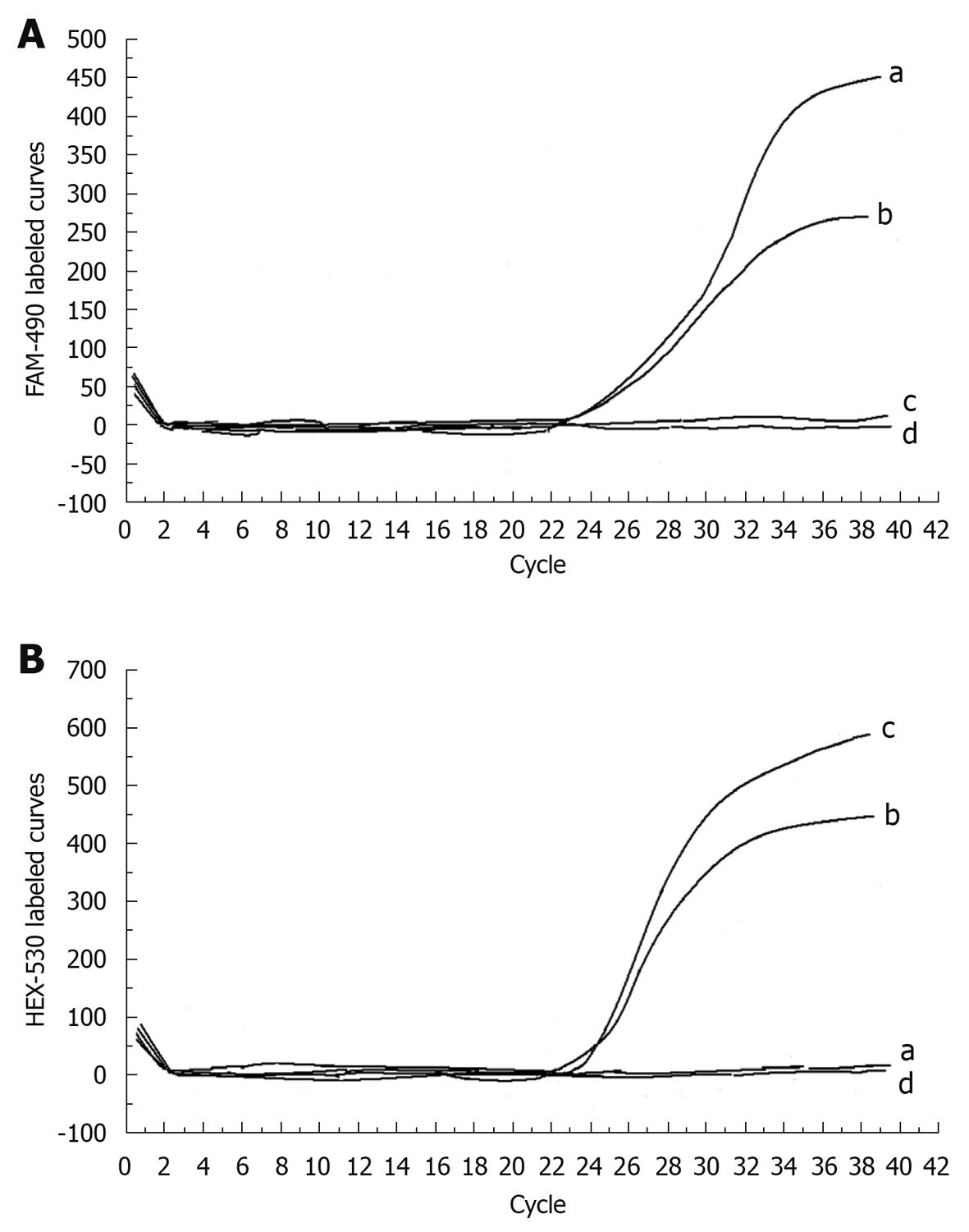Copyright
©2010 Baishideng.
World J Gastroenterol. May 14, 2010; 16(18): 2278-2282
Published online May 14, 2010. doi: 10.3748/wjg.v16.i18.2278
Published online May 14, 2010. doi: 10.3748/wjg.v16.i18.2278
Figure 1 Distribution of idiopathic intrahepatic cholestasis infants enrolled in our study.
As shown in the map, the provinces were separated into three parts by the Yangtze River and the northern latitude circle of 30°. The numbers in parentheses are the number of alleles of 851del4 mutation over the tested alleles.
Figure 2 Positive fluorescences on FAM-labeled (A) and HEX-labeled (B) curves for different samples.
As shown in the figure, positive fluorescence was observed on both FAM-labeled and HEX-labeled curves in sample b, indicating that b is a heterozygote. In sample c, positive fluorescence was only observed on the HEX-labeled curve, indicating that c is a homozygote. Positive fluorescence was observed on the FAM-labeled curve, otherwise HEX-labeled curve is a horizontal line in sample a, indicating that sample a has a wild sequence. d is a blank control with negative fluorescence on both FAM-labeled curve and HEX-labeled curve.
-
Citation: Fu HY, Zhang SR, Yu H, Wang XH, Zhu QR, Wang JS. Most common
SLC25A13 mutation in 400 Chinese infants with intrahepatic cholestasis. World J Gastroenterol 2010; 16(18): 2278-2282 - URL: https://www.wjgnet.com/1007-9327/full/v16/i18/2278.htm
- DOI: https://dx.doi.org/10.3748/wjg.v16.i18.2278










